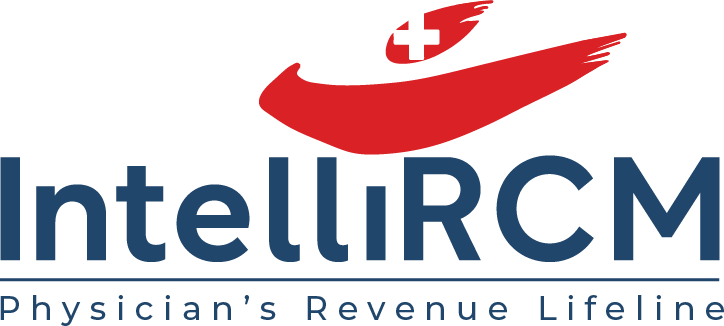
By intellircm 30th Jun 2022 Blog
Implementing an efficient revenue cycle management system alleviates claim discrepancies and improves revenue collections. Benefits include a simplified claims process, reduced healthcare and patient fraud, and lesser administrative burden.
If your healthcare system or provider suffers from common revenue cycle management (RCM) challenges including collections, lack of training, and difficulty meeting compliance standards, a revenue cycle management solution can help.
Learn about implementing an RCM program below, no matter whether you’re a small practice or a larger hospital organization.
6 Healthcare Revenue Cycle Management Challenges
Healthcare practices need a consistent, fast, and smooth financial management platform. When administrative staff must devote disproportionate resources to claims processing or revenue collections, the ability of the healthcare provider to render quality care is hindered.
Moreover, anyone who has dealt with finances in the healthcare practice industry knows that claim denial and billing errors can result in huge revenue loss for your healthcare practice.
In general, healthcare revenue cycle management connects your healthcare providers with the insurance companies. Many healthcare systems implement automated systems to facilitate patient registration, claim submission and approval/denial, and patient payments and collections.
Adopting a revenue cycle management program is the surest way to tackle challenges and reduce errors.
Depending on the hospital, these revenue cycle challenges can vary but generally include:
Payment Collection and Billing
Your healthcare practice must establish effective payment collection and billing processes. Otherwise, providing quality healthcare services is simply unattainable.
Collecting payments becomes an issue when patients are unable to pay for their services upfront. This means patients have to split and manage their debts.
Ways to reduce payment collection issues include:
- Providing patients with a price estimate
- Collecting patients’ responsibilities before providing services
- Processing insurance eligibility and other requirements before obtaining payments
Payment collection and billing is a complex process. It now requires the hospital to establish and maintain an automated process streamlining billing services while also eliminating payment and billing errors.
Collecting payments also requires effective claims management and accounts receivable monitoring. You must also manage your cash flow and payer claims.
Accounts receivable is a term that refers to all money owing, such as debts, payments, need claims, etc., from a patient to the provider. Poor monitoring and tracking of the entire accounts receivable process results in revenue losses for hospitals and healthcare providers.
Claims processing, on the other hand, is another branch of hospital revenue cycle management. Like accounts receivable, ineffective claims processing procedures can result in hefty financial losses. This is most likely to occur when a claim has been denied and neither the patient nor the hospital management system can identify the error.
Usually, the mistake is a result of human error. One study found that nearly one-third of hospitals in the U.S. are managing claims manually, causing a headache for hospital management.
Another study found that nearly 70% of claims can be automated. A revenue cycle management solution can solve both issues.
Lack of Training and Education
Managing a revenue cycle management program requires continued training and education for end-point users. This includes both front-end and back-end users.
One key challenge with hospital revenue cycle management is the discrepancy between the front-end and back-end revenue cycle positions. This occurs when one position doesn’t understand the responsibilities of the other.
For instance, the front-end duties involve the staff who conduct patient intake, collect patient data, and receive payment. The back-end staff, on the other hand, transitions the payment into an insurance claim. The problem occurs when the back-end staff doesn’t understand the holistic process.
Because of this lack of understanding, hospital staff can’t identify where the error has occurred. When patient data is collected and is not entered correctly, inaccurate medical coding, billing, and insurance claim denials are often the result.
These errors add up to costly hospital expenses and a lot of bad debt. Hospital management can curb this problem by providing regular training for staff on the latest coding techniques.
Training and education issues have been further compounded by the continuing pandemic. By one metric, the healthcare industry has lost more than 600,000 employees.
Credentialing
Another method of reducing errors is through proper and correct credentialing. In this process, physicians are connected to payers by following a set of standard steps.
If a physician is not credentialed or not credentialed correctly, the payer tends to reject or delay payments.
Maintaining and Meeting Compliance Standards
One consistency about compliance standards is that they constantly change. The most pressing compliance standards today stress data privacy. And for good reason: data privacy and patient information must be protected.
For any hospital or healthcare organization’s management, safeguarding this information must be a top priority. Your healthcare revenue cycle management system must meet the following compliance standards:
- Coding
- Regular facility audits
- Cybersecurity
- Data protection programs
Sometimes, these things can be overwhelming for the staff to keep up with. Still, failing to meet these guidelines will result in serious penalties.
Inaccurate Conclusion Based on Data
A comprehensive revenue cycle management program also enables data-based decision-making.
This includes new technologies that enable data analytics, which plays a big role in the healthcare industry, such as optimizing the clinician’s time to cash flow and healthcare information. To successfully apply data analytics, however, your healthcare system must implement updated technology.
Most health facilities still rely on legacy tools, however. This produces inaccurate data-based conclusions.
As a provider, you can save a vast amount of manual effort required in doing administrative work by adopting the latest statistical and analytical tools to derive accurate information.
Use IntelliRCM for Your Revenue Cycle Management Solution
The better you maintain your revenue operations, the more time your staff can devote to providing quality care rather than completing administrative tasks. With an effective end-user software system, your healthcare system or hospital can manage claims from front-end to back-end.
Book a free RCM session with us today.





